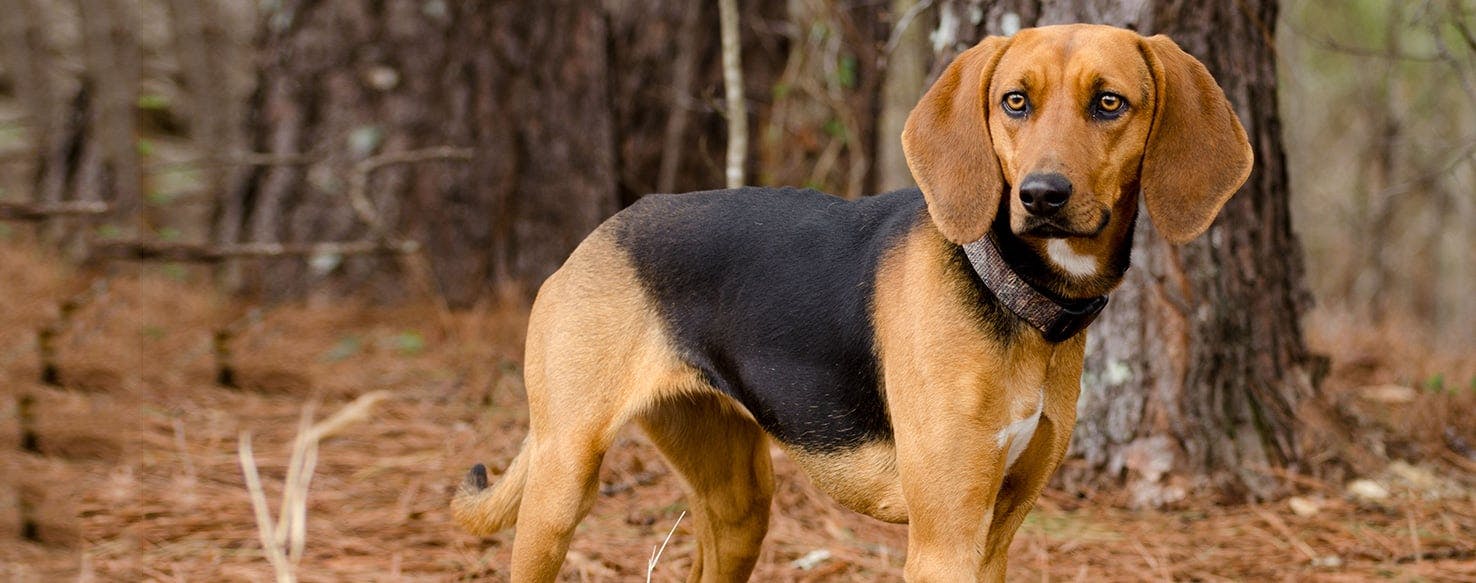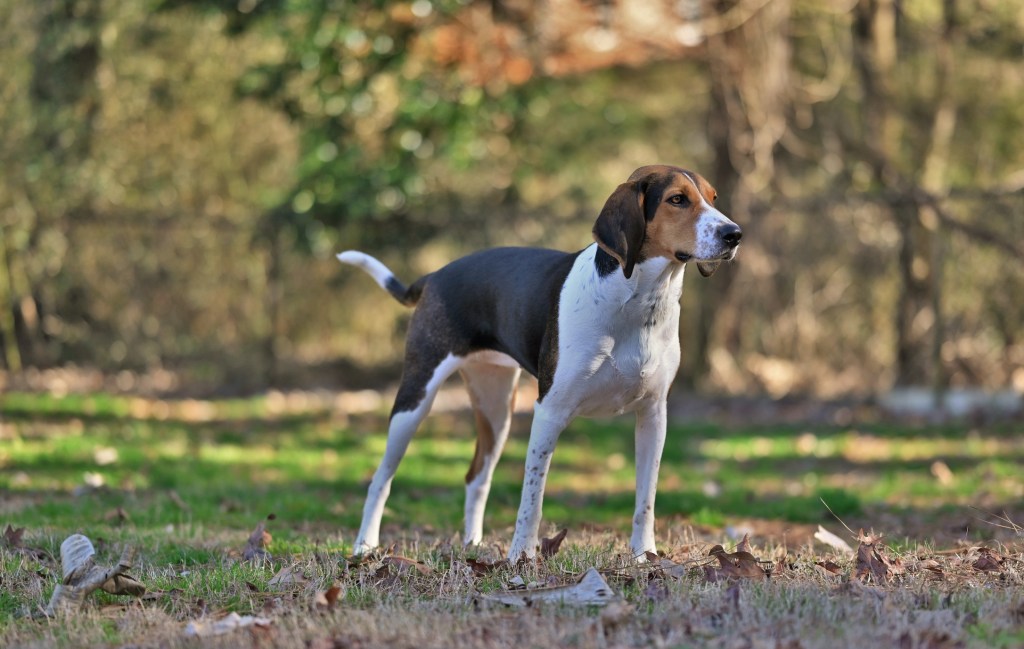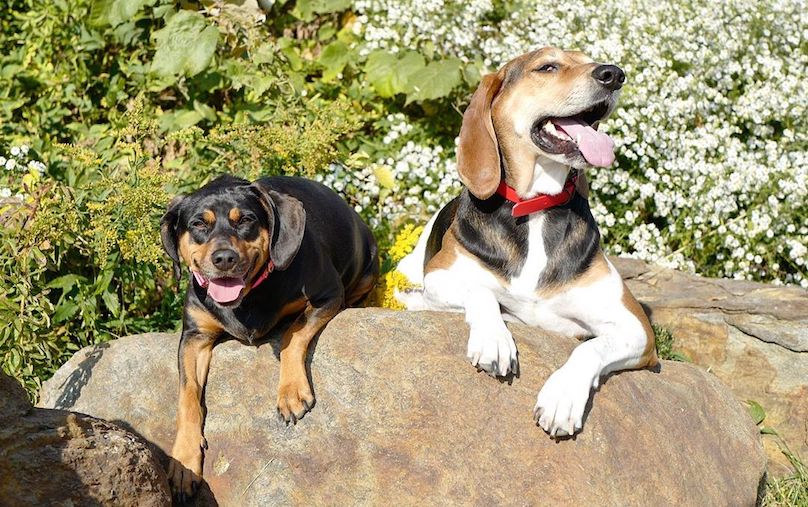Are you considering a Treeing Walker Coonhound as an addition to your family, and wondering about their protective instincts? Look no further, as we delve into the unique traits of these loyal and spirited hounds. Known for their boundless energy and love for the hunt, Treeing Walker Coonhounds exhibit a strong sense of loyalty to their human companions. But what about their protective nature? Are Treeing Walker Coonhounds Protective?
Let's explore this aspect and uncover the distinctive qualities that make them not just energetic and loyal but potentially great protectors for your family.

While they are typically friendly and sociable, their protective nature shines through when it comes to safeguarding their family members. Understanding the protective tendencies of this breed is essential for creating a harmonious environment at home and ensuring that their guarding instincts are properly channeled. Join us as we explore the protective nature of Treeing Walker Coonhounds and how it aligns with your expectations for a furry companion.
Understanding the Protective Instinct toward
Treeing Walker Coonhounds are known for their strong protective instincts, which stem from their history as hunting dogs. Their loyalty and dedication to their owners make them naturally inclined to protect their family members and territory. Understanding the underlying reasons behind their protective nature can help owners appreciate and manage this trait effectively. By recognizing the roots of their protective instincts, owners can establish a strong bond with their Coonhounds and provide the guidance necessary to ensure a well-rounded and balanced pet.
Treeing Walker Coonhounds are often described as loving and affectionate companions, but their protective nature adds an extra layer of security to any household. This protective instinct is deeply ingrained in their genetic makeup, making them vigilant and responsive to potential threats. While this trait can manifest in various ways, it ultimately reflects their commitment to keeping their loved ones safe. When harnessed and directed appropriately, their protective instincts can enhance the overall well-being of the family and create a sense of security both at home and outdoors.

The protective nature of Treeing Walker Coonhounds is not solely based on aggression; rather, it is rooted in their innate sense of responsibility and devotion to their human pack. They are known to form strong bonds with their family members, and this bond often fuels their desire to protect and provide comfort. Owners can leverage this instinct to foster a deeper connection with their Coonhounds and establish trust and reliance on both sides. Understanding this aspect of their behavior can lead to a more fulfilling and enriching relationship between the dog and its human family.
Traits and Characteristics of Treeing Walker Coonhounds
When considering the protective instincts of Treeing Walker Coonhounds, it's essential to delve into their overall traits and characteristics. These hounds are renowned for their athleticism, endurance, and remarkable sense of smell, traits that have been honed through generations of breeding for hunting purposes. Their keen sense of smell and sharp instincts make them excellent watchdogs, alerting their owners to any unusual activity or potential threats in their vicinity.
In addition to their physical abilities, Treeing Walker Coonhounds are recognized for their intelligence and adaptability. These traits contribute to their effectiveness as protectors, as they can quickly assess situations and respond accordingly. Their adaptability allows them to adjust their protective behaviors based on the specific needs of their family, making them versatile guardians for various living environments.
Another notable characteristic of Treeing Walker Coonhounds is their inherent sociability and friendliness. While they are protective by nature, they are also known for their affectionate and amiable demeanor towards their human companions. This balance of protective instincts and friendly disposition makes them well-suited for households seeking a loyal and loving companion that also offers a sense of security and protection.
Training and Socialization for Protective Behaviors
Effective training and socialization play a crucial role in shaping the protective behaviors of Treeing Walker Coonhounds. As with any dog breed, early socialization is paramount in ensuring that their protective instincts are channeled appropriately and that they interact positively with people and other animals. By exposing them to various environments, experiences, and individuals from a young age, owners can help their Coonhounds develop a well-rounded and confident approach to their protective duties.
Incorporating obedience training into their routine can further refine their protective behaviors and establish clear boundaries for appropriate guarding. Training exercises that focus on command recognition, impulse control, and proper response to perceived threats can help owners mold their Coonhounds into reliable protectors while maintaining a cooperative and manageable demeanor. Consistent and positive reinforcement during training sessions can strengthen the bond between the dog and its owner, fostering a sense of trust and cooperation that is essential for effective protection.
Socialization efforts should extend beyond interactions with people and animals to encompass exposure to various stimuli, such as different sounds, environments, and situations. This broad socialization approach can help Treeing Walker Coonhounds develop a well-adjusted and discerning attitude towards potential threats, allowing them to differentiate between normal occurrences and genuine dangers. Through structured socialization and training, owners can guide their Coonhounds in utilizing their protective instincts judiciously while promoting a balanced and confident temperament.

Signs of Protective Behavior in Treeing Walker Coonhounds
Recognizing the signs of protective behavior in Treeing Walker Coonhounds is essential for understanding their responses to perceived threats and their overall approach to safeguarding their family and territory. While each dog may exhibit variations in their protective behaviors, there are common indicators that owners can observe to gauge their Coonhound's protective inclinations.
One prominent sign of protective behavior is alertness and vigilance, where the Coonhound becomes attentive and focused on its surroundings, especially in unfamiliar or potentially threatening situations. This heightened state of awareness allows them to assess potential risks and respond swiftly if necessary. Owners may notice their Coonhound exhibiting a more watchful and attentive demeanor, often accompanied by increased vocalization or physical posturing to signal their alertness.
Another observable sign of protective behavior is territoriality, where the Coonhound displays a strong attachment to specific areas within the home or outdoor space. This territorial instinct can manifest as reluctance to allow unfamiliar individuals or animals into their designated territory, prompting them to assert their protective presence through vocal warnings or defensive postures. Understanding and respecting their territorial boundaries is vital in nurturing their protective instincts without encouraging unwarranted aggression.
Protective behavior in Treeing Walker Coonhounds may also manifest through their response to perceived threats, which can range from assertive vocalizations and body language to physical intervention if they sense imminent danger. Are Treeing Walker Coonhounds Protective?
Owners may observe their Coonhound positioning themselves between their family members and a perceived threat, signaling their readiness to intervene if the situation escalates. This proactive stance underscores their commitment to shielding their loved ones from harm and reflects the depth of their protective instincts.
Managing and Channeling Protective Instincts
Effectively managing and channeling the protective instincts of Treeing Walker Coonhounds is crucial for fostering a secure and harmonious coexistence with these loyal companions. By providing outlets for their natural inclinations and establishing clear guidelines for acceptable behaviors, owners can cultivate a balanced and controlled approach to protection within the household.
Regular exercise and mental stimulation are essential components of managing their protective instincts, as these activities help mitigate any excess energy and anxiety that may contribute to overzealous guarding behaviors. Engaging in activities that align with their hunting heritage, such as scent work or interactive play, can provide a constructive way for Coonhounds to express their instincts while reinforcing their bond with their owners.
Creating a safe and comfortable space within the home where the Coonhound can fulfill their need to monitor their surroundings and rest undisturbed can help alleviate any tension associated with their protective duties. Providing designated areas or access to elevated vantage points can satisfy their instinctual desire to oversee their environment while offering a sense of security and control.
Setting clear boundaries and expectations through consistent training and reinforcement can help guide their protective instincts toward appropriate responses. By establishing rules for interactions with visitors, defining acceptable alarm triggers, and reinforcing commands related to protection and restraint, owners can shape their Coonhound's protective behaviors in a manner that aligns with the household's dynamics and values.

Misconceptions about Treeing Walker Coonhounds' Protective Nature
Despite their steadfast loyalty and protective instincts, Treeing Walker Coonhounds are often subject to misconceptions regarding their temperament and behavior. One common misconception is the assumption that their protective nature translates into unwarranted aggression or hostility towards strangers. In reality, properly socialized and trained Coonhounds are capable of discerning between genuine threats and harmless encounters, exhibiting a composed and discerning approach to protection.
Another misconception pertains to their compatibility with children and other pets in the household, with concerns arising about their protective instincts leading to conflicts or unease within the family dynamic. When raised and socialized in a nurturing environment, Treeing Walker Coonhounds can display remarkable patience and gentleness towards children and other animals, often assuming a protective role over younger family members while remaining amiable and tolerant.
It is important to dispel misconceptions about their protective nature by emphasizing the significance of responsible ownership, proper training, and consistent socialization in shaping their behavior. By addressing these misconceptions, owners can gain a more accurate understanding of the balanced and adaptable nature of Treeing Walker Coonhounds' protective instincts, fostering an environment of trust and cooperation within the family unit.
Living with a Protective Treeing Walker Coonhound:
Living with a protective Treeing Walker Coonhound entails embracing their innate qualities while providing the necessary guidance and support to ensure a harmonious coexistence. Establishing a routine that incorporates opportunities for exercise, mental stimulation, and bonding activities can help satisfy their physical and emotional needs, promoting a content and balanced mindset conducive to effective protection.
Creating a secure and enriching environment within the home, complete with designated resting areas, interactive toys, and outlets for their natural instincts, can contribute to a sense of fulfillment for the Coonhound while reinforcing their role as guardians. By integrating their protective inclinations into the fabric of daily life through structured activities and positive reinforcement, owners can nurture a confident and discerning approach to protection that aligns with the family's dynamics.
Open communication and education within the household and with visitors can foster an understanding of the Coonhound's protective nature, promoting respectful interactions and cooperation. Educating family members and guests about the breed's characteristics and needs can help mitigate misunderstandings and cultivate a supportive environment that acknowledges and appreciates their role as protectors.

Seeking Professional Help for Behavioral Issues
In cases where owners encounter challenges in managing or understanding their Treeing Walker Coonhound's protective behaviors, seeking professional guidance from qualified trainers or behaviorists can provide valuable insights and solutions. A professional evaluation can help identify underlying factors contributing to specific protective behaviors, allowing for tailored strategies to address any concerns and enhance the overall well-being of the Coonhound and its family.
Behavioral modification techniques and personalized training plans can be developed in collaboration with professionals to address any potential issues related to excessive guarding, territoriality, or reactivity. These tailored interventions aim to redirect and refine their protective instincts, fostering a balanced and responsive approach to safeguarding without compromising their core traits.
Professional assistance also offers the opportunity to assess the household dynamics, identify potential triggers for protective behaviors, and implement effective management strategies to promote a secure and cooperative living environment. By leveraging the expertise of professionals, owners can gain valuable support in navigating and addressing any behavioral issues, ultimately fostering a positive and enriching experience with their protective Treeing Walker Coonhound.
Conclusion and Summary:
In conclusion, Treeing Walker Coonhounds possess inherent protective instincts that stem from their history as dedicated hunting companions and loyal family members. Are Treeing Walker Coonhounds Protective? Their protective nature, when understood and nurtured appropriately, contributes to a sense of security and companionship within the household. By recognizing and embracing their protective inclinations, owners can cultivate a balanced and responsive approach to protection that aligns with the family's dynamics and values.
Understanding the traits and characteristics of Treeing Walker Coonhounds, combined with effective training and socialization, forms the foundation for channeling their protective instincts in a constructive manner. By acknowledging and addressing misconceptions about their protective nature, owners can promote a more accurate and respectful understanding of their Coonhound's role as a guardian and companion.
Living with a protective Treeing Walker Coonhound involves creating a supportive and enriching environment that acknowledges and integrates their protective instincts into daily life. Seeking professional help when faced with behavioral challenges can provide valuable guidance and tailored strategies to address specific concerns and enhance the overall well-being of the Coonhound and its family.
In essence, the protective nature of Treeing Walker Coonhounds enriches the lives of their human companions, offering a steadfast and devoted presence while embodying the qualities of a loyal and vigilant guardian. Embracing their protective instincts and guiding them with care and understanding ultimately fosters a bond built on trust, respect, and the shared fulfillment of safeguarding and cherishing the moments spent together. Understanding and appreciating the protective nature of Treeing Walker Coonhounds paves the way for a rewarding and harmonious partnership with these remarkable hounds.
This article explores the protective instincts of Treeing Walker Coonhounds, shedding light on their loyalty, characteristics, training, and misconceptions. It provides insights into living with and managing their protective nature, emphasizing the importance of professional guidance when needed. Overall, it serves as a comprehensive guide for individuals considering a Treeing Walker Coonhound as a protective and loving addition to their family.
FAQs
- What are the inherent protective traits of Treeing Walker Coonhounds?
- Treeing Walker Coonhounds are not typically known for being overly protective or aggressive. Their primary traits include being alert, intelligent, and loyal, but they are generally more focused on hunting and tracking than on guarding. While they may alert their owners to strangers or unusual situations with barking, they are not naturally inclined towards guard-dog behavior.
- How do Treeing Walker Coonhounds compare to other breeds in terms of protectiveness?
- Compared to breeds specifically bred for protection, such as German Shepherds or Doberman Pinschers, Treeing Walker Coonhounds are less likely to exhibit strong protective instincts. They are hunters at heart, with a strong prey drive and a love for tracking and treeing game, which takes precedence over guarding or territorial behaviors.
- Can Treeing Walker Coonhounds be trained to be more protective?
- While basic protective behaviors like alert barking can be encouraged, it's important to remember that Treeing Walker Coonhounds are not naturally inclined towards aggressive protection. Training should focus on obedience and socialization, rather than trying to develop guarding behaviors that are not innate to the breed.
- Are Treeing Walker Coonhounds suitable for families seeking a protective dog?
- If a family is looking for a dog primarily for protection, a Treeing Walker Coonhound might not be the best choice. They are better suited for families who appreciate their hunting abilities, energy, and friendly nature. However, their alertness and loyalty can provide a basic level of security through their presence and bark.
- How does the hunting background of Treeing Walker Coonhounds influence their protective behavior?
- The hunting background of Treeing Walker Coonhounds greatly influences their behavior. They are more focused on tracking scents and pursuing prey than on guarding territory. This hunting drive means they might be more interested in exploring and chasing than in staying close to home to protect it.
- What are the signs that a Treeing Walker Coonhound is acting protectively?
- Signs of protective behavior in Treeing Walker Coonhounds might include alert barking when strangers approach, standing between their owner and a perceived threat, or showing wariness in unfamiliar situations. However, these behaviors are more about alertness and curiosity than about true protective aggression.
- How do Treeing Walker Coonhounds behave around strangers, and does this reflect their protective nature?
- Treeing Walker Coonhounds are generally friendly or indifferent to strangers. They may bark to announce the presence of someone new, but they usually warm up quickly once they realize there is no threat. This behavior reflects their social nature more than any protective instinct. They are more likely to greet a stranger with curiosity than with hostility.




